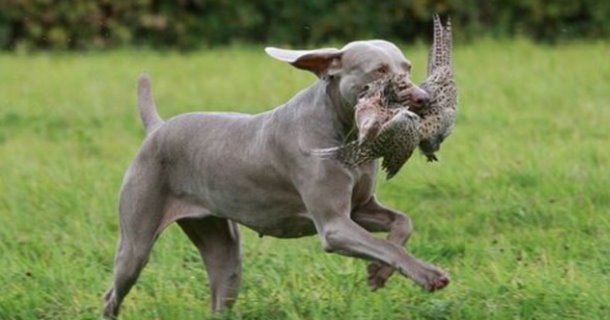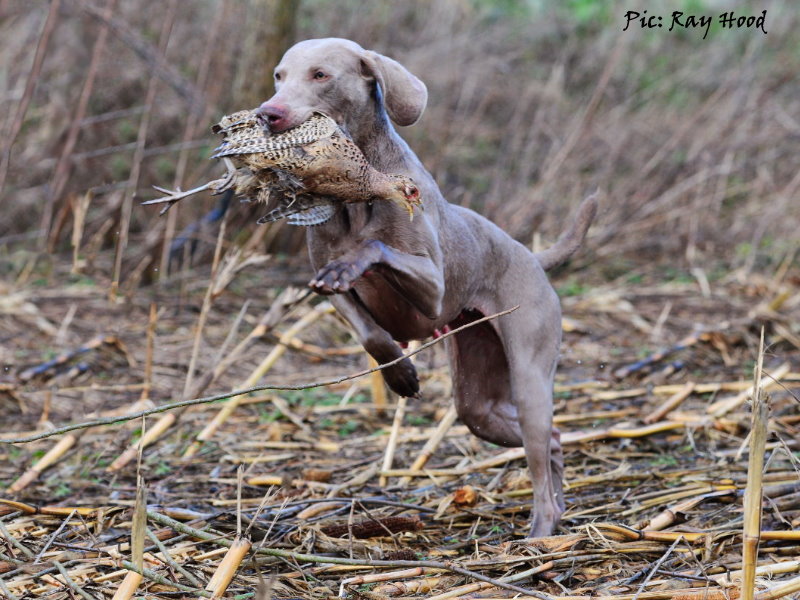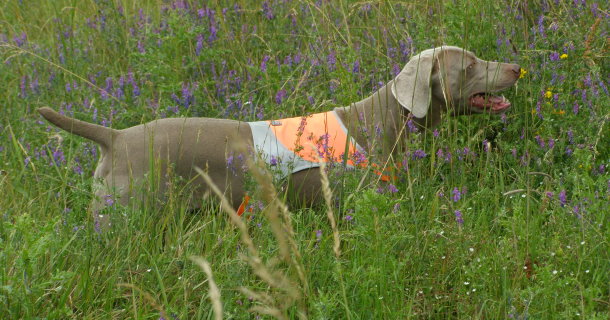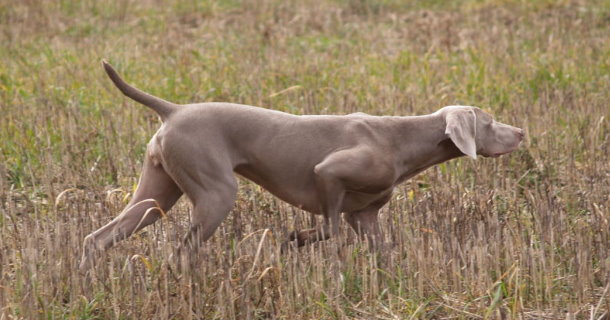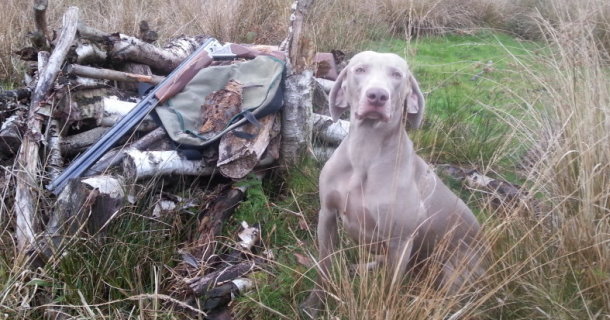
100% Hunting Lines
I do wonder what people mean when using the term “100% hunting line”. Whatever the basis for any objective calculation of, let’s say, a “Coefficient of Hunting” (COH), 100% is an unlikely score.
Simplistically the 100% might be arrived at by a negative measure against the concentration of, say, shown dogs with no proven field accomplishments in the line. This is not to impugn the potential hunting calibre of shown dogs, as showing, a medium, inter alia which seeks to reward dogs based on conformation to a breed standard, has a useful role in maintaining aspects of the breed type, and there are many “dual purpose” gundogs who have show and field accomplishments..
To be a positive measure, the implication of the term 100% is that every dog in the pedigree, going back to the first registered breeding pair of pure-bred weimaraners, has been worked in some fashion in a hunting context, and achieved some agreed standard. So that there can be no dilution of the line by non-worked dogs. For a 100% line to be anything would mean that all progeny down the generations have been useful hunting dogs, or culled, or restricted from breeding when they failed some objective test. This scenario is unlikely in the extreme, except perhaps in Germany. It would be rare for every pup in a particular litter to be raised and worked in the home of a hunter. Even breeders with established proven hunting lines with a particular hunting renown rarely place every pup into hunting homes.
However, it could well be that those non-hunting owners of weimaraners are restricted from breeding from the dog in the absence of a satisfactory hunting test score. This is my understanding of the ethos behind the German system.
It is my understanding that no other country operates such a system to control breeding by deliberative restriction. It is all very well to describe a particular dog which has German tested parents to be from 100% lines, but this 100% quality is diluted in the ensuing litter the instant such a dog is bred (for example in another country) to a non German tested dog.
I have mentioned the term “by some objective” test. We all have some understanding of the VGP and other “prufung” tests and criteria. It may well be that someone is able to claim, anecdotally or not, around the campfire or not, that this or that mated pair were both great hunters, and so the progeny comes from “100% hunting lines” and this may be enough to satisfy some breeders and some owners, notwithstanding the complete absence of objective testing.
The conception of a Coefficient of Hunting is predicated on the likelihood of the dilution, one generation to another, of the pedigree by matings to untested (and therefore unproven) dogs. The higher the density of tested and approved dogs in a pedigree, and the higher their individual COH the higher the COH will be for any litter. Incidentally I would suggest that a litter inherits what could be termed a Birth COH from its antecedents, and the more tested dogs in the nearer generations the more “concentrated” and therefore higher the BCOH. An algorithm could be devised to achieve this. This figure could be compared with other litters, or engineered to be prospectively higher, on paper, by careful selection of tested potential mating partners. A particular dog “earns” its Earned COH by performing well in objective tests. It is always the ECOH which are used to derive the BCOH of any litter.
VJP, HZP, VGP are well understood, point of time, testing regimes. What is being tested and when is well documented. The aspects of work and characteristics of the dog being appraised form the basis or are in some, if imperfect, way adopted or mirrored by trial setters across the world. The scores distil into a single number the overall performance of the dog on the day. The factors used to weight individual traits may vary around the world.
It could be argued that the VGP score is a de facto ECOH. To be universally comparable what remains is for the non-VGP countries to establish “VGP equivalent” testing regimes or rate their own tests and trials placings or awards to be of equal merit or map to a particular range of VGP scores. Titles alone probably cannot accomplish this. Universality is probably an impossible goal because for example, voice, tongue, spurlaut is either a vice or virtue depending on what is being hunted and what is being tested, when and where.
Moreover, additional difficulties arise with “universality” due to wide differences in hunting terrains, (highland, lowland, arable, moorland, marshland, woodland, forest, semi-desert etc.) and also in the quarry. The foundation of the various breed types of versatile scenting hunting dogs was the hunter’s solution to many of these variables in the first place.
Some will say that they would never rely purely on a ECOH score to select a suitable breeding mate for their dog. This is a laudable claim. But in Germany a scoring system has already determined whether or not a dog is available, period. So to damn the usefulness of an ECOH system is to damn the usefulness of the German system. Not many would be prepared to do that unless they had something better to offer.
Put another log on the campfire I feel a chill coming on…

